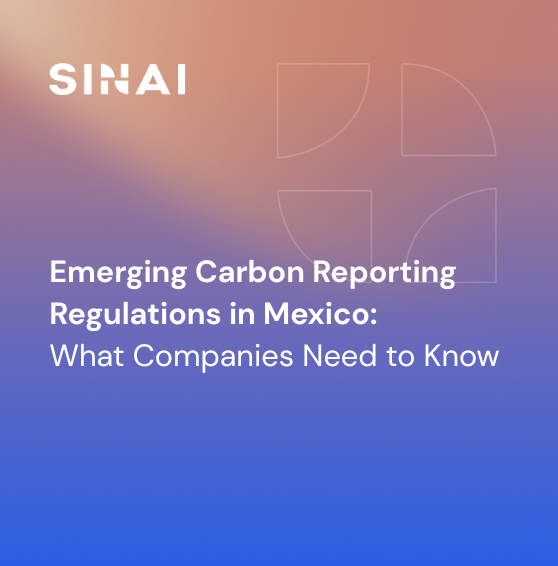
Navigating California’s SB 253 and SB 261 and Optimizing Climate Disclosures
Introduction
It seems like every other month a new policy is formalized that will require companies to disclose emissions data and climate-related risks. GRI, SEC, FAR, CDP, SECR, CSRD…. the list of alphabet soup seems to go on and on. Since each one caters to a specific audience, understand which policies apply to your company can be confusing, to say the least. On October 7th, California governor Gavin Newsom signed into law SB 253 and SB 261, which will require certain companies operating in California to disclose climate data. We’ll explore what both of the two new regulations mean for your business, and how you can navigate different regulations and optimize your disclosure process.
Background
California has long been a leader in environmental policy. The state has among the most rigid and established environmental policies on everything from cap and trade systems, tailpipe emissions, and carbon-intensive fuels. In fact, California has operated on a waiver to the Clean Air Act so that the state could enact more stringent regulations than the Federal Government. Given its reputation and history, it’s no surprise that California has implemented a disclosure of this magnitude.
So what exactly do SB 253 and SB 261 require?
SB 253 - Climate Corporate Data Accountability Act
This impacts companies with over $1 Billion in annual revenue and have any business in California. SB 253 requires these companies to disclose their Scope 1, 2, and 3 emissions aligned with the GHG Global Protocol. Reporting is expected to be required for all companies meeting this criteria by 2026, once the California Resource Board (CARB) provides specific disclosure details. Scope 3 emissions are expected to be required one year later.
SB 261 - Climate Corporate Data Accountability Act
This impacts companies with over $500 Million in annual revenue and have any business in California. SB 261 requires these companies to disclose any climate-related financial risks aligned with the Task Force on Climate Related Disclosures (TCFD), as well as any strategy to mitigate and manage these risks. These disclosures must be completed by 2026 and must be available to the public for free on the company website.
What does “doing business in California” actually mean?
California actually defines this term on their website. In short, one of these three criteria need to be met:
- The company performs any business transaction in the state for financial gain
- The company is organized or commercially domiciled in California
- The company’s California sales, property or payroll exceed the amounts published for that year (check the link above for current amounts)
It’s important to note that the dollar thresholds in each policy are for the company as whole, not just the business in California. This means that if you run a $1.2 Billion global company, but have only $50,000 of business in California, you are still required to disclose your emissions under SB 253 and your climate-related risks under SB 261 for your entire company operations (not just your California business).
Optimizing Disclosures
There has been a slough of required climate disclosures in the past year, especially for U.S. based companies. In the past 18 months, the SEC and FAR have each proposed similar disclosure requirements for publicly traded companies and contractors with the federal government, respectively. SB 253 and SB 261 only distinguish companies by revenue, so it’s possible some companies will need to disclose to all of these regulations, while others might only need to disclose to one or two. While navigating these regulations can seem daunting, the good news is there is a bit of overlap. All of these leverage reporting frameworks such as the GHG Global Protocol and Task Force for Climate Related Disclosures (TCFD).
This is where software can shine. Choosing a tool that is aligned with the GHG Global Protocol and the TCFD can give you confidence that your calculations and disclosures match the requirements of the regulations. Some estimates indicate that creating a single disclosure for a single year can cost as much as $500,000 in time, consulting, and data collection costs. Utilizing an aligned tool will reduce this cost significantly by expediting the reporting process, streamlining your data collection and reporting, and ensure all your numbers are consistent and repeatable for all the disclosures aligned with these frameworks.

-2.png)
%20(7).png)








